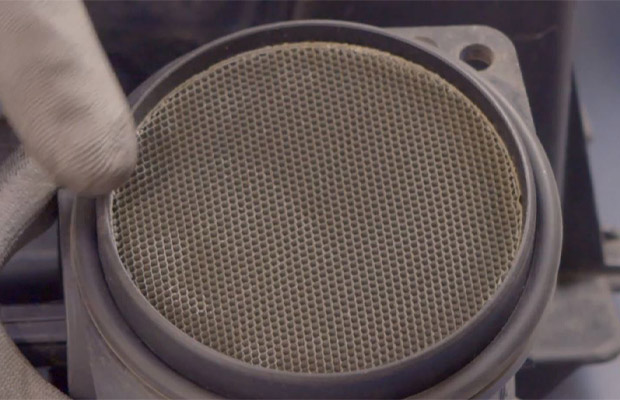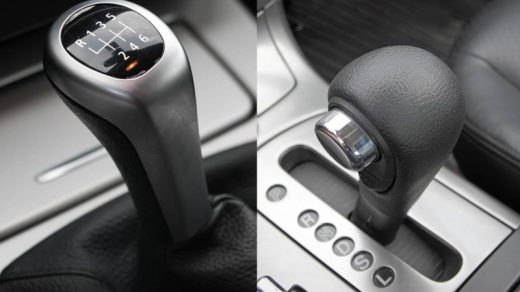Have you wondered Why is my car revving in park? Our article will outline the seven primary causes of your car’s sudden revving so you can better understand the situation and know how to address it.
When a car’s engine starts to malfunction while it is moving or idle, it can be a serious issue that could result in collisions or accidents.
But fortunately for you, the majority of issues brought on by a rough idle or your car revving up and down erratically can be fixed for not too much money.
Here are the main factors of a car revving in park.
Table of Contents
Why is My Car Revving in Park? 7 Main Factors
There are seven common reasons for your engine revving in park, including a dirty air flow sensor, a faulty throttle sensor, a damaged O2 sensor, vacuum leak, a plugged EGR valve, brittle wiring, and defective computer.
But before we dive deeply into causes, let’s explore what is “revving”? Revving is a slang word for accelerating a vehicle.
Sudden car revving on its own in park can grow into an enormous problem if left unattended.
The main cause of this idle problem is typically internal engine wear, which contributes to common symptoms like thumping noises or jerky motions in the car.
Below are some popular factors behind this problem:
Dirty Mass Air Flow Sensor

One obvious cause of the revving issue is a dirty mass air flow sensor.
This engine-attached sensor was developed to detect air mass flow into the motor mechanism through the throttle portion.
The analytical system is then given access to the data. The amount of fuel required to produce the right amount of air in the engine cylinders will then be calculated using programmed algorithms.
As time goes on, the MAF sensor may become filthy and clogged with debris. Incorrect air intake information is likely to show as a result of this filthy buildup damaging the mass air flow sensor.
Thankfully, you can clean the MAF sensor using cleaners that are specifically made for this purpose, like CRC spray, to restore its ability to measure airflow.
The best option would be to select cleaning implements that won’t leave any film behind because these can seriously harm the sensor.
Sticking Throttle Body
A dirty throttle body is another factor explaining the wonder: why is my engine revving in park? The fuel that goes into the engine is managed by this device.
It works by opening or closing a valve to let a certain amount of air into the engine.
The throttle will open to allow either minimal airflow or maximum airflow into the internal mechanism in response to signals from the MAF sensor.
The throttle position sensor, like the mass air flow sensor, can accumulate dirt over time.
As a result, the body stops functioning normally in terms of opening and closing, which is followed by the car’s erratically revving engine.
The good news is that you only need to clean the throttle valve to allow free air flow into your car’s engines. Below is our straightforward guide for you:
- A clamp, an electric ratchet, a scrubber, a torque wrench, and an inspection mirror are some of the cleaning supplies you’ll need to have ready. Don’t forget glasses and gloves, as you may use some chemicals during the process
- Disconnect the electrical connector for your safety
- Remove the boot and four bolts attaching to the throttle body
- To remove dust and debris, soak the throttle in cleaning solutions while it is upside down.
- Please allow it to dry in a space with good ventilation.
- restore the engine system’s throttle. Good luck!
Bad Oxygen Or O2 Sensor
Another factor is the degraded O2 sensor. The catalytic converter’s oxygen sensor typically measures the amount of air that is released through the exhaust pipe.
The computer at the headquarters will then analyze the data before modifying the air or fuel ratio to keep the engine running smoothly.
After some time, carbon deposits that are created by water droplets in the air that are passing over the oxygen sensor are likely to cause the rust phenomenon.
Consequently, it can no longer estimate the air outflow, which is why your engine revs when in park.
By checking the engine light or running an OBD2 scanner to scan engine codes, you can determine whether your oxygen sensor has broken or not.
A new O2 sensor, which should not set you back more than $100, is the only way to solve this problem.
Vacuum Leak
A vacuum leak from one of the numerous systems connected to your engine is another potential cause of your car revving on its own. The engine in your car can be compared to a big pump that draws in air, compresses it, and then ignites it to send power to the wheels. Manufacturers of automobiles have discovered over time that your engine creates a vacuum as it draws in outside air.
The vacuum that the engine produces could then be used by the manufacturer to power different systems inside the car. The brakes, EVAP, and EGR systems are vacuum-line-powered systems. Because of this, you might notice that your engine’s intake manifold has a lot of vacuum lines running from it.
These rubber vacuum hoses and lines have a tendency to dry out and crack over time. As a result, the air/fuel ratios in your engine may differ from what your mass air flow sensor detects. This can happen when vacuum lines crack, allowing air to leak out and affect the engine’s performance.
A vacuum hose only requires a small piece of rubber hose, so replacing it is typically inexpensive. The bad news about vacuum leaks is that it can occasionally be challenging to identify the hose that is to blame. To check for a change in your engine idle speed, you might need to run a smoke test or spritz carb cleaner into your vacuum lines.
EGR Valve Failed Or is Plugged
Exhaust Gas Recirculation, or EGR, is a more recent technology created by automakers to help their cars and engines meet stringent emission standards. It merely circulates exhaust gases back through the engine before they exit your tailpipe and enter the atmosphere.
As with the O2 sensor, the EGR valve opens and closes as necessary but, like the O2, it is susceptible to contamination from the carbon in exhaust emissions. Your idle will react and stop operating normally when this occurs.
There is some good news. It is not expensive to buy or replace this part when it malfunctions. Finding it and gaining access to the part so you can do that is the difficult part.
Frayed Wiring
In some cases, the cause of the revving is not a sensor, throttle, or vacuum line, but rather a drive-by cable system that serves as an intermediary data transmission to your car’s computer.
Electrical wires may corrode and fray if your car hasn’t been repaired and maintained for a while.
The information sent to the central computer system may be inaccurate and inconsistent.
If you now have trouble with your car revving on its own in park, check the wiring connection in the nick of time.
Future damage and wear may result from this, which could be disastrous. Otherwise, it is strongly advised that you test a fresh set of wires in case the old wiring network causes any additional issues.
Faulty Car Computer
Eventually, a bad computer may be in charge of your car revving in park. The term “engine computer” is frequently used to refer to products with well-known brand names like PCM, ECU, or ECM.
They all serve the same purpose, which is to interpret the data provided by various systems in order to keep the engine running efficiently, despite coming from different origins.
As a result, if a computer issue arises, it will be unable to compile, examine, proceed, and transform data into information that can be used.
Consequently, because it is out of your control, your car might struggle to run and start revving erratically.
Computer issues are not typically straightforward to resolve. Its parts aren’t always easy to find, and many people can’t afford the repair costs.
You May Also Like:
Important Notes
- This is not a comprehensive list. There are also other causes explaining why your car is revving in park.
- Common offenders for this issue are the throttle body and related sensors in the car. Therefore, in order to save time and effort, check these automotive components first.
- An engine revving on its own in park is dangerous, as it can make your car suddenly raise the speed. On the road, accidents or crashes may occur.
- For the sake of your safety and the safety of others, exercise caution when operating your potentially inoperative vehicle. Drive carefully and keep your eyes on the road.
- Check your car’s engines and systems at home as soon as you discover a problem so you can fix it immediately. If your rear-wheel drive vehicle is not operable, you should also have it towed to the service center workshop.
Final Words on Why is My Car Revving High in Park
This informative article offers all the details you require regarding the revving issue.
After contemplating our post, we hope you will find your automobile’s exact problem and correctly answer a question: Why is my car revving while it’s in park?
It is not true that problems with car engines are difficult to fix just because they have grown more complex. Simply carry out the necessary diagnostic work to determine whether you are capable of making the repair.
Meanwhile, complicated automobile engines make us yearn for the simpler times, when all you needed was a basic screwdriver and a turn of the screw.
For more trustworthy sources, kindly follow us. Thanks for reading.
Also Check: Why Won’t My Car Shift Out of Park?
FAQs
Why is My Car Revving High When I Start It?
Common causes of high RPM excursion at start-up are typically: large vacuum leak, throttle plate stuck open, cruise control stepper motor stuck in one position; faulty throttle position sensor, and/or faulty idle air control motor or solenoid.
Why is Car Revving on Its Own When Stationary?
If you’re noticing your car rev up whenever your car is idling, this is most likely caused by a fault in your fuel pressure.
Can High Idle Cause Damage?
It’s true that prolonged idling can harm your engine’s spark plugs, cylinders, and exhaust systems.



